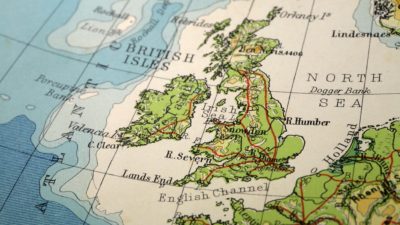Shares of upmarket leather goods firm Mulberry Group (LSE: MUL) fell by as much as 30% on Monday, after the company warned that profits could be hit by the failure of House of Fraser.
Today, I’ll take a look at the scale of the damage faced by this small-cap growth stock, and explain why I’d prefer to put my cash into a larger, better-established rival.
£3m hit could get bigger
When House of Fraser went into administration, it gave Sports Direct founder Mike Ashley the opportunity to buy the chain without being required to pay almost £1bn owed to creditors. That may prove to be good news for the department store, but means suppliers will have to take a hit.
Should you invest £1,000 in Airbnb right now?
When investing expert Mark Rogers has a stock tip, it can pay to listen. After all, the flagship Motley Fool Share Advisor newsletter he has run for nearly a decade has provided thousands of paying members with top stock recommendations from the UK and US markets. And right now, Mark thinks there are 6 standout stocks that investors should consider buying. Want to see if Airbnb made the list?
Mulberry is one such supplier, with concessions in 21 House of Fraser stores. The company said today that it expected to report a total loss of £3bn as a result of House of Fraser going into administration.
Given that the luxury handbag firm only reported a pre-tax profit of £6.9m last year, that’s a big hit. But things could get worse. In Monday’s statement, Mulberry warned that UK trading has been “challenging” since June. If it doesn’t improve during the remainder of the year, management expect profits to be “materially” lower. This usually means at least 10%.
Catch this falling knife?
Mulberry shares have now fallen by more than 50% this year. It’s tempting to view this as a bargain buying opportunity, but I’m not convinced. Although the balance sheet remains strong, with net cash of £25m, the shares don’t look cheap to me.
If we ignore the £3m loss from House of Fraser as a genuine one-off, then I estimate the shares still trade on about 40 times forecast earnings for 2018. Operating profit margins are still low, at about 4%. Without clear evidence of strong earnings growth, this business seems too expensive to me.
Here’s what I’d buy instead
Luxury goods producers can be a profitable investment. My favoured choice in this sector is Burberry Group (LSE: BRBY).
This 162 year-old fashion house has the same attractive growth profile in Asian markets as Mulberry. But unlike its newer rival, Burberry benefits from much greater scale and heritage. In my view, these factors provide good protection for investors wanting a lower-risk buy.
Like-for-like sales growth rose by 3% during the first quarter, which may seem modest. But last year’s figures showed decent progress, with adjusted earnings up by 10%, excluding currency effects.
A cash machine
Burberry’s profitability also improved last year. Operating profit margin rose from 14.2% to 15%, while return on capital employed climbed from 21.3% to 24.6%.
High returns of this kind usually result in strong free cash flow, and that’s true here. Burberry’s net cash balance rose by £83m to £892m last year. That’s equivalent to around 10% of its market cap. This provides strong support for the group’s dividend. It’s also allowed chief executive Marco Gobbetti to allocate another £150m to share buybacks.
Shares in this luxury goods firm currently trade on about 28 times forecast earnings, with a prospective yield of 1.9%. That may not seem cheap, but I believe the firm’s valuable brand and high profit margins make it a fair price to pay. I’d be happy to buy these shares for a long-term, buy-and-hold portfolio.







